
Craters of the Moon National Monument - 2008 . . .
on our
route to the Pacific Northwest
Updated: 11/30/08
Craters of the Moon National Monument is located eighteen mile west of Arco, Idaho. At first glance, the unearthly landscape appears like some bizarre alien world. The stark lava features led early travelers to compare the area to the moon's surface.

Have you ever been to the moon?
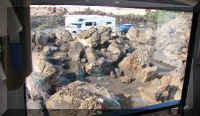 We think we know what it would be like living on the moon. The campground was
like . . . camping on the moon. When the monument was named in 1924, this is
what they thought the moon looked like. It was good for our solar panels but not real
habitable for humans. The view from our window was all lava rock and
ash.
We think we know what it would be like living on the moon. The campground was
like . . . camping on the moon. When the monument was named in 1924, this is
what they thought the moon looked like. It was good for our solar panels but not real
habitable for humans. The view from our window was all lava rock and
ash.
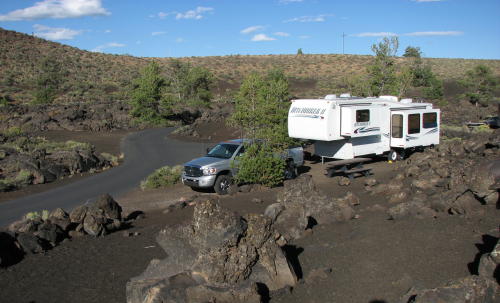
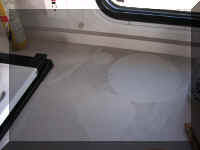
The people next door to us had left their roof vents open - we were told their motorhome had lava ash on all surfaces.
There is a seven mile loop drive. We drove the loop the evening we arrived and again the next morning. There are hiking trails through the park of varying lengths.
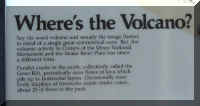 The
'volcanoes' at Craters of the Moon are different.
The
'volcanoes' at Craters of the Moon are different.
It will be difficult to describe what we saw. We tried to photograph various colors and textures and patterns to the lava flow.
A Cinder Garden . . .
Spatter Cones . . . a sidewalk permitted you to go inside the cone.
The sidewalk . . . Someone going inside . . . Snow in August . . . Mary Lou coming in . . .
Rough texture, close-ups of surfaces . . .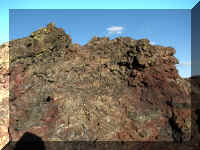
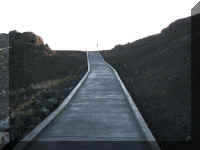
This particular path led to an overlook for the Spatter Cones.
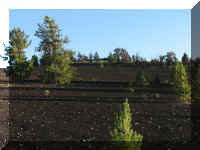
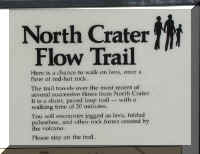
A sign in the parking area of The North Crater Flow Trail pointed to a 'Shortcut to Campground'. Fred walked the 'shortcut' to the top of the hill overlooking the campground. It was so windy at the top, he had to lean into the wind to make his photographs.
From the top of the hill, he could see our HHII.
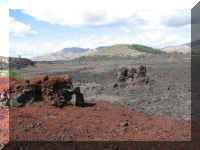
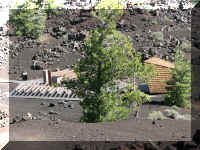
When Fred returned, Mary Lou was waiting. We hoped this lava rock did not roll on our truck.
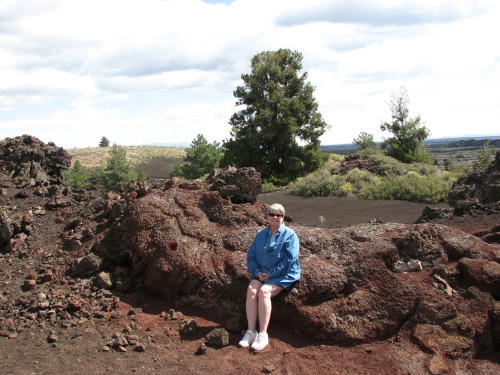
An area of varying patterns . . .
So much lava . . .
This looks like a road in the lava.
A pond ? No, a circle of ash.
More photographs of the HHII . . .
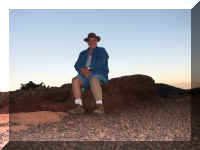
The surface of Inferno Cone was all loose lava ash.
The view from the top . ..
Smoke from a forest fire . . . viewed from the top of the Inferno Cone.
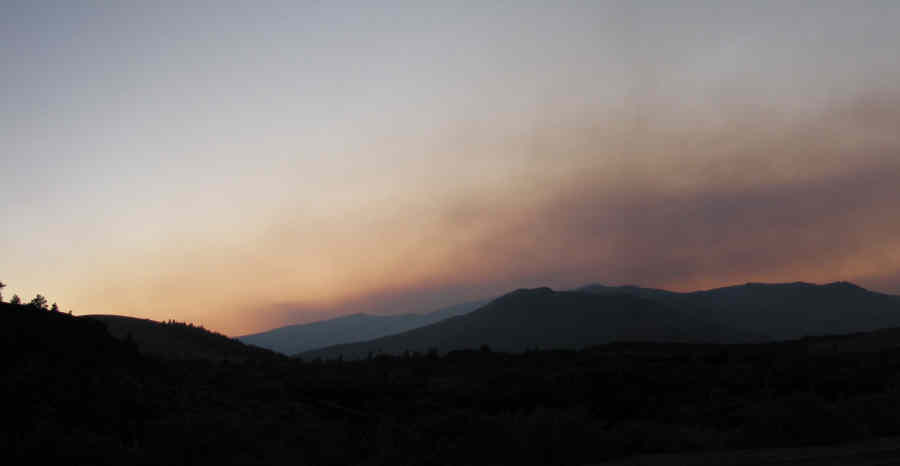
It is recommended that you arrive in the afternoon so you can drive the loop
road the evening you arrive and in the morning before you leave. This would
not leave you time to take any of the trails. We arrive in the late afternoon
and stayed for two nights. We found the colors of the volcanic materials much
more pronounced in the evening.
Some people come here and see black "rocks", while others see what
President Calvin Coolidge described as the "weird and scenic landscape
peculiar to itself".
The entrance fee is $8 per private vehicle. The park remains open all year.
Note: There aren't many campgrounds that we like to arrive at in the dark - maybe none. The Craters of the Moon is one NOT to arrive at in the dark. When it get dark, it is really dark. And, all the lave racks are black.
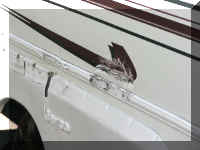
GO BACK TO > > > Pacific Northwest - 2008